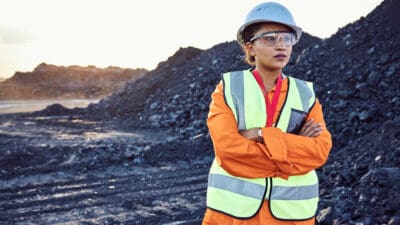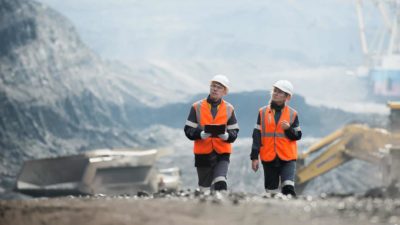The iron ore price is currently US$126 per tonne after an 0.55% gain overnight.
However, the price is 13.4% lower than this time last year, according to Trading Economics data.
In March 2022, the iron ore price reached its highest level for the year at about US$160 per tonne.
Movements in the iron ore price have a direct impact on ASX mining share prices.
So, let's see what CBA has to say about the commodity's value in 2023.
What's happening with the iron ore price in 2023?
The iron ore price rallied 10% in January after China reopened its economy. This prompted increased demand for steel as the manufacturing and construction sectors recommenced normal activity.
This was a continuation of a rally that began in November when China eased its COVID restrictions and then dumped its COVID-zero policy altogether in December.
The iron ore price rose from a low of about US$80 per tonne in November to a seven-month high of $130 per tonne on 30 January.
Chinese manufacturing is rebounding and the government is stimulating construction activity through liquidity injections and new credit lines for developers.
China's reopening has lifted many ASX mining shares, particularly the iron ore pure-play Fortescue Metals Group Limited (ASX: FMG). The Fortescue share price is up 8.3% in the year to date.
Fellow ASX iron ore shares are also up.
The BHP Group Ltd (ASX: BHP) share price is up 5.8% in the year to date. The Rio Tinto Limited (ASX: RIO) share price is up 6.2%. Junior iron ore explorer Grange Resources Limited (ASX: GRR) is up 28%.
The iron ore price has come off a bit in February, with the value now up 3.3% over the past 30 days.
What is CBA's prediction for the iron ore price?
According to reporting in The Australian, CBA analysts expect the iron ore price to fall to US$100 per tonne over the coming months. They reckon the recent rally is unsustainable.
CBA commodity strategist Vivek Dhar said he expects Chinese steel demand to continue to accelerate in 2023 but the risk of a property market downturn remains.
Dhar said:
It is still anticipated that steel demand from China's property construction sector will contract notably again in 2023 and the extent of contraction is expected to be steep enough to bring down China's total steel demand by up to 2 per cent in 2023.
Weaker Chinese steel demand should weigh on China's steel output and iron ore consumption.
Dhar also expects a modest increase in seaborne iron ore supply during 2023. This will impact the supply and demand equation and potentially reduce the iron ore price as well.
Government expects higher exports but lower earnings
As we've previously reported, Australia's three biggest miners — BHP, Rio Tinto and Fortescue — are ramping up production at the new mines they've built in recent years.
According to the Department of Industry, Science and Resources, Australian iron ore exports are forecast to increase by 2.5% in 2022–23 to 896 million tonnes, and by 2.7% to 920 million tonnes in 2023–24.
Despite this, the government expects lower earnings due to lower iron ore prices. Earnings are expected to fall from $133 billion in 2021–22 to $113 billion in 2022–23, and then to $95 billion in 2023–24.
In 2022, 82% of Australia's iron ore export earnings came from China.







